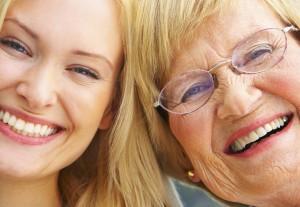Consider the Following Facts:
- Cardiovascular Disease (CVD) includes heart attacks, strokes and peripheral artery disease (abdomen and legs). CAD is the number one cause of death in the United States, resulting in over 900,000 deaths annually and representing nearly one half of ALL causes of death.
- Additionally, hundreds of thousand of women and men survive their initial attack and frequently with varying degrees of disability.
- For an excellent overview of cholesterol and the role of plaque in causing heart attacks, strokes and peripheral arterial disease visit: www.webmd.com/cholesterol-management/cholesterol-and-artery-plaque-buildup
Good News: Over the past two decades major advances in the research of cardiovascular
disease and the role of cholesterol and atherosclerotic plaque has demonstrated that this process
is potentially preventable and reversible, thereby preventing heart attacks and strokes.
In 2004 I began a clinical study using screening office vascular ultrasound testing to diagnose
the presence of cholesterol plaque within the carotid arteries to the brain, abdominal aorta and
the femoral arteris in the lower extremities. When any plaque is present, a complete diagnostic
carotid artery duplex ultrasound is performed to determine exactly what type and location of
the plaque is present as well as the amount of narrowing (stenosis) of the artery, blood flow
pressures and surface contour of the plaque. This diagnostic carotid artery study establishes a
baseline with which future ultrasounds can be compared for stability, progression or regression.
Results to date: In patients who have made significant changes in their lifestyle habits and have
followed my recommendations, the result has been very encouraging. In nearly 2000 patients
the progression of their disease (as measured by their carotid artery plaque) has been stopped,
stabilized and even reversed. And to my knowledge no events have occurred to date. In fact,
there are a number of patients who NO longer have any evidence of their previous plaque. The
ramifications of these findings are monumental for the potential of significantly reducing the
mortality and the morbidity caused by this disease.
Remember: Plaque may be common as we age, but it is NOT normal. It is a disease and is still
is the Number 1 cause of death and disability in the U.S. However, it has been clearly
demonstrated that plaque can be stopped and even reversed.
The Key:
o Diagnosing the presence of plaque before it ruptures, causing a heart attack or stroke.
o Treating patients with asymptomatic (subclinical) disease (plaque) in the same manner as
those patients who have had a heart attack or stroke (clinical) and survived.

 There’s always been a debate about women and heart disease: Are their symptoms different from those of men? Ask any woman that has had a heart attack and they will tell you no. Symptoms in women who are having a heart attack are generally not that different than those experienced by men, say cardiologists. In a heart attack, men feel heaviness in their chests, shortness of breath, nausea or other general discomfort — just the same as women do.
There’s always been a debate about women and heart disease: Are their symptoms different from those of men? Ask any woman that has had a heart attack and they will tell you no. Symptoms in women who are having a heart attack are generally not that different than those experienced by men, say cardiologists. In a heart attack, men feel heaviness in their chests, shortness of breath, nausea or other general discomfort — just the same as women do.
 Scientists have developed a new model that can predict a woman’s risk of developing breast, ovarian and endometrial (womb) cancer.
Scientists have developed a new model that can predict a woman’s risk of developing breast, ovarian and endometrial (womb) cancer. One of the main priorities for Dr. Gordon Gunn is to provide a safer alternative to traditional open surgery by offering Gynecology Robotic Surgery. This approach is used when indicated and whenever possible based on the disease we are treating, the patients’ anatomy, and the overall medical condition of the patient. Gynecology Robotic Surgery offers the following benefits to our patients:
One of the main priorities for Dr. Gordon Gunn is to provide a safer alternative to traditional open surgery by offering Gynecology Robotic Surgery. This approach is used when indicated and whenever possible based on the disease we are treating, the patients’ anatomy, and the overall medical condition of the patient. Gynecology Robotic Surgery offers the following benefits to our patients:
 Updated Information That Could Save Your Life
Updated Information That Could Save Your Life